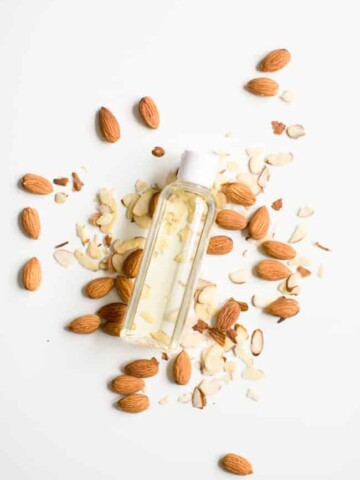It's a time-tested beauty ingredient, but there are plenty of modern-day uses for witch hazel. Read on for 13 ways to use this natural herbal remedy on everything from acne to varicose veins.

Jump to:
- 13 Effective Witch Hazel Uses + Recipes
- 1. Combat Oily Skin
- 2. Relieve Sunburns
- 3. Natural Bug Spray
- 4. Minimize Varicose Veins
- 5. Soothe Puffy Eyes
- 6. Simple Acne Treatment
- 7. Reduce Razor Burn
- 8. Treat Cuts and Scrapes
- 9. Heal Bruises
- 10. Refresh Parched Skin
- 11. Sanitize Hands
- 12. Remove Makeup + Clean Makeup Brushes
- 13. Ease Eczema
13 Effective Witch Hazel Uses + Recipes
Extracted by steaming twigs from the shrub, witch hazel is remarkably cooling and refreshing. But witch hazel does more than just give skin a soothing pick-me-up.
This natural astringent tightens pores and tones and is especially helpful for balancing oily skin and drying pimples. For minor injuries like bruises or scrapes, its anti-inflammatory and anti-microbial properties reduce swelling and speed healing.
Here are simple but effective ways to use witch hazel in your beauty routine:
1. Combat Oily Skin
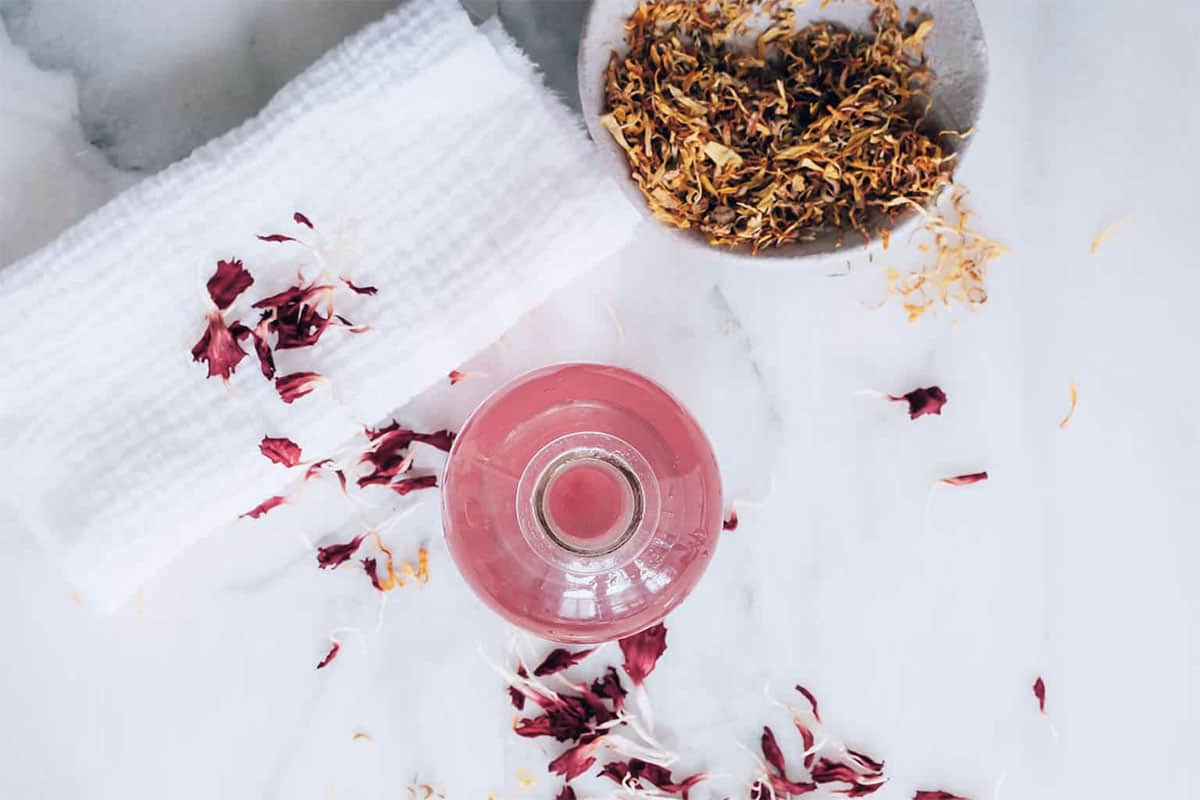
This natural astringent removes excess oil and can be used daily as a toner for oily skin. Apply it with a cotton swab after cleansing to balance oil production and dry up pimples.
For normal to oily skin, use one part water to three parts witch hazel. Witch hazel can be too drying for dry skin, so reduce the ratio to 1:1 and add a splash of rosewater.
2. Relieve Sunburns

To treat a sunburn, add a little bit of witch hazel to aloe vera gel and apply it to the affected area. Or make a sunburn soothing bath by adding 1–2 cups of witch hazel to lukewarm bath water.
Its anti-inflammatory properties will soothe the swelling and pain from too much sun and help protect the skin from sun damage [source].
3. Natural Bug Spray
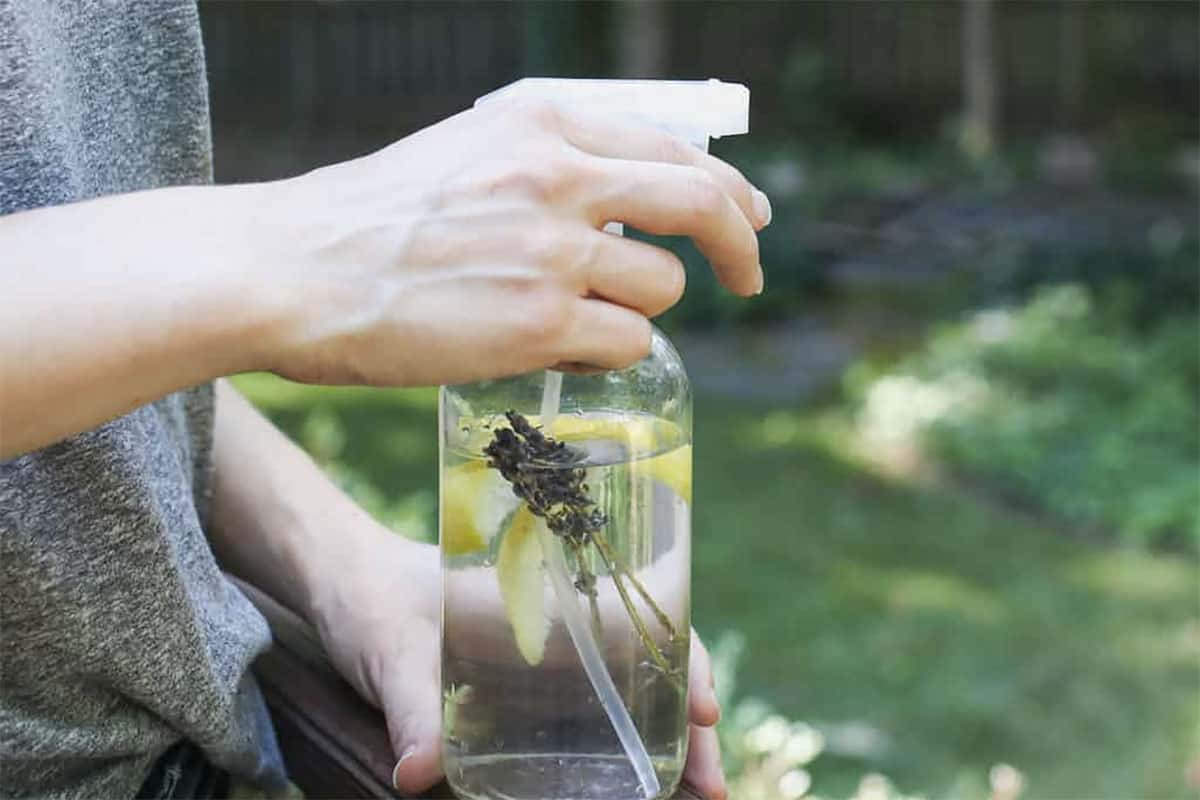
Witch hazel with jojoba oil and essential oils makes an excellent natural bug spray. But if you do get bitten, witch hazel can relieve both pain and inflammation from bee stings, bug bites, poison ivy, and poison oak [source]. Soak a cotton ball, and then apply it to the bite area or rash.
4. Minimize Varicose Veins
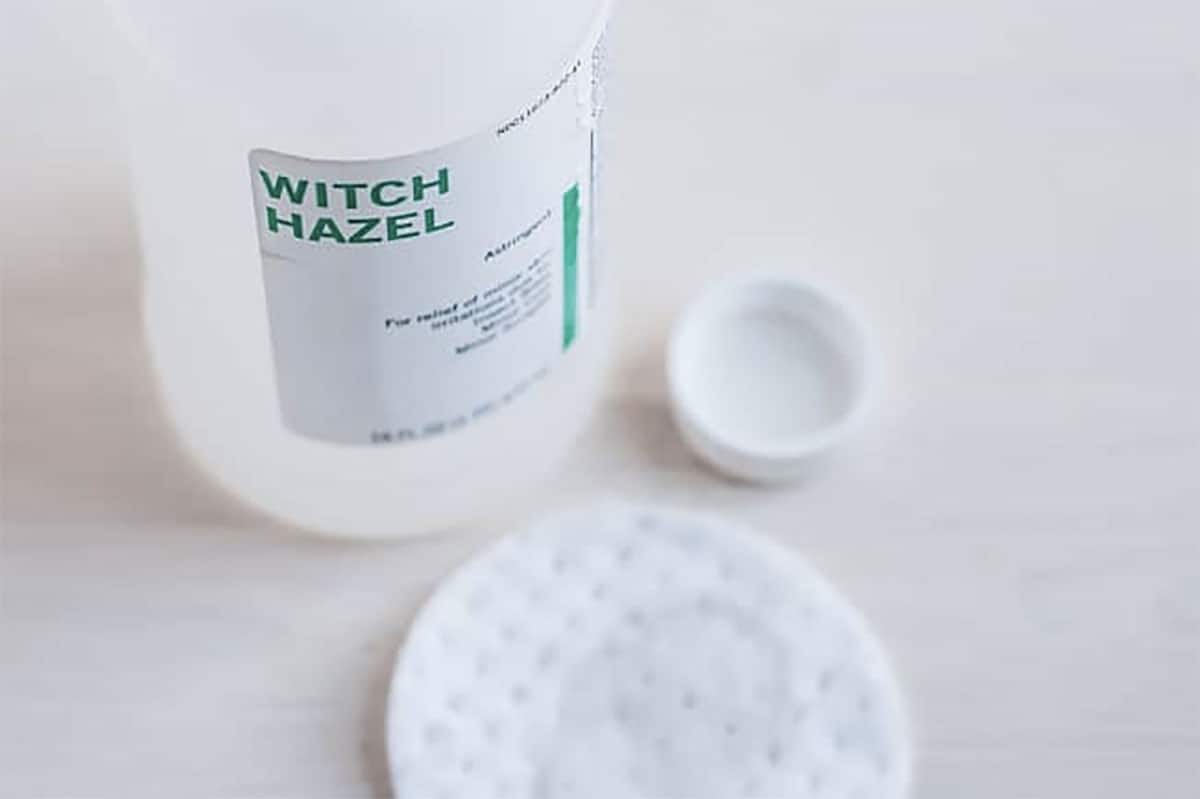
Witch hazel is not only a natural astringent for cuts and wounds, but it's also a great herb for strengthening blood vessels. Its anti-inflammatory tannins and gallic acid [source] work together to shrink puffy veins and reduce swelling from varicose veins.
To reduce the appearance of varicose veins and temporarily reduce pain or swelling, soak a washcloth in chilled witch hazel, and place it on the affected area twice a day.
If treating legs or ankles, be sure you have them raised to help blood flow back to the heart. You can also add witch hazel to a tub and soak your legs for at least 15 minutes.
5. Soothe Puffy Eyes
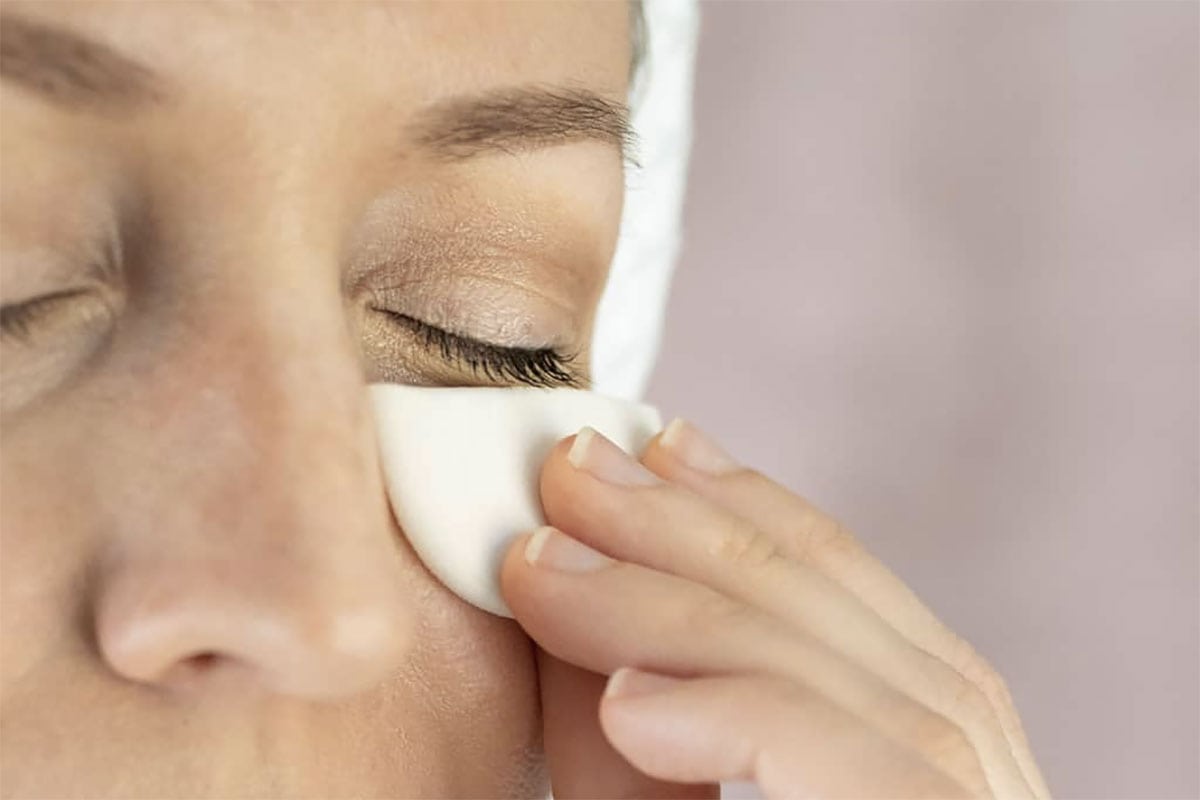
Chilled witch hazel is extra refreshing and soothing for tired eyes. Apply a bit to a cotton pad or ball and place it below your closed eyes for 5 minutes for an instant refresh that reduces those under-eye bags.
6. Simple Acne Treatment

Witch hazel is especially helpful in dealing with acne because it naturally decreases oil without drying out the skin. Try this acne-fighting cleanser with activated charcoal to draw impurities, dirt, and bacteria out of pores.
For a quick spot treatment, use a cotton swab soaked in witch hazel and apply to a pimple or blemish for a few seconds to act as an antiseptic and to bring the swelling down [source].
7. Reduce Razor Burn
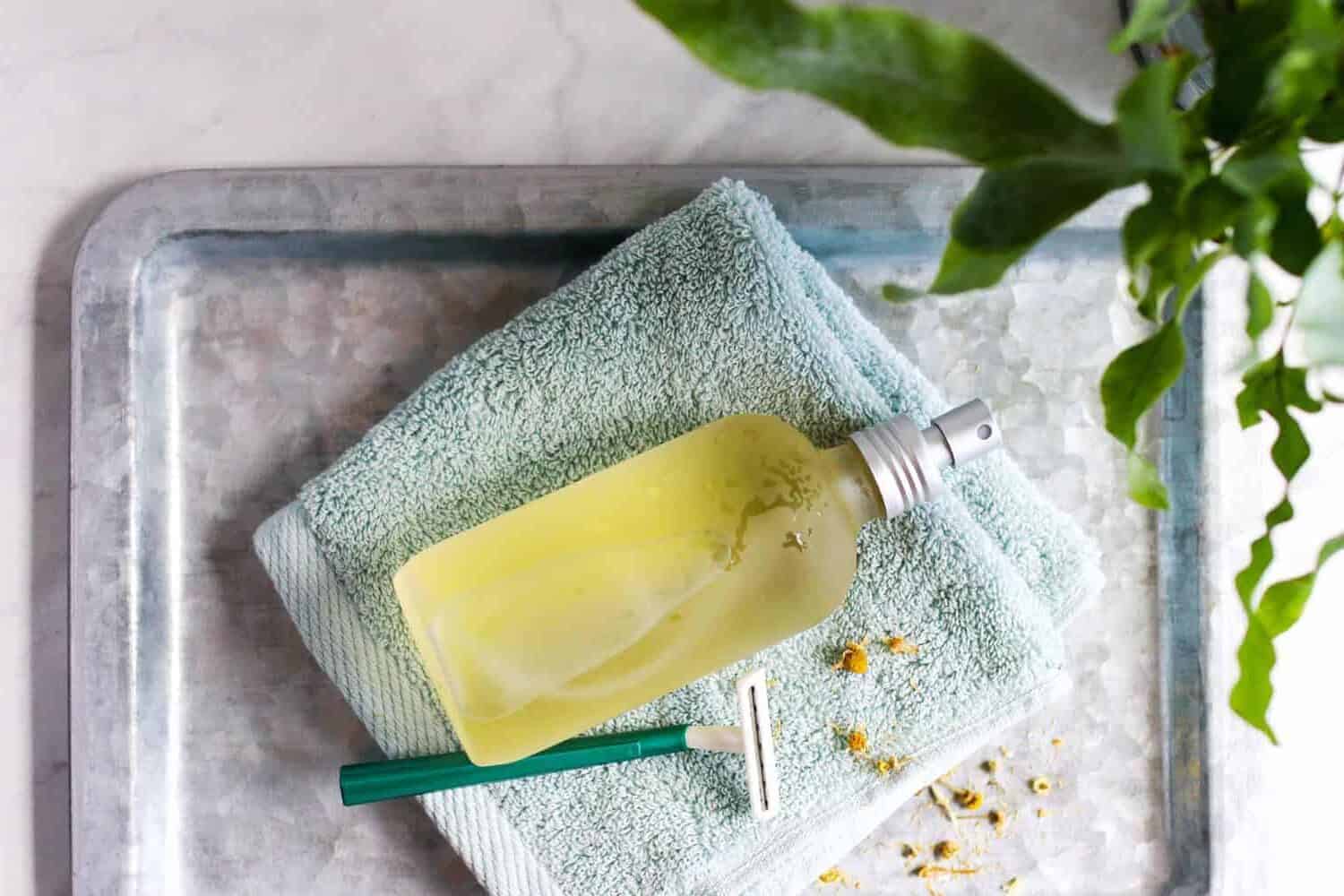
Skip the aftershave and use cooling witch hazel instead. To reduce razor burn, you can apply witch hazel to the skin before shaving.
If you're unlucky enough to get razor burn, try swiping irritated skin with witch hazel, and the gallic acid in this natural antiseptic will reduce the inflammation and prevent the growth of bacteria [source]. Witch hazel is a star ingredient in this razor burn spray that you can use as a pre-shave oil to soften hair or as an aftershave mist to reduce swelling and prevent bumps.
8. Treat Cuts and Scrapes
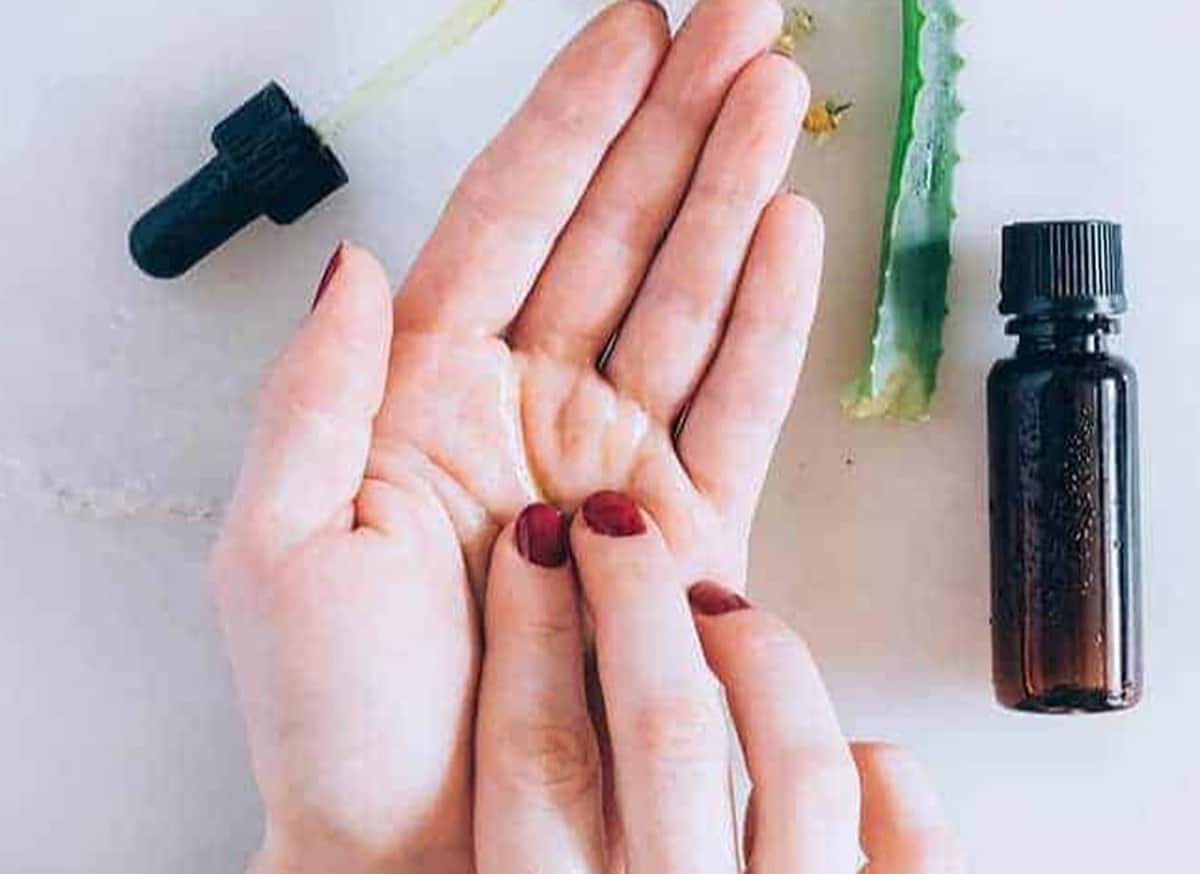
Witch hazel helps wounds heal faster, cleanses cuts and scrapes, and fights infections [source]. Use witch hazel to wash and disinfect minor skin injuries and help stop the bleeding.
9. Heal Bruises
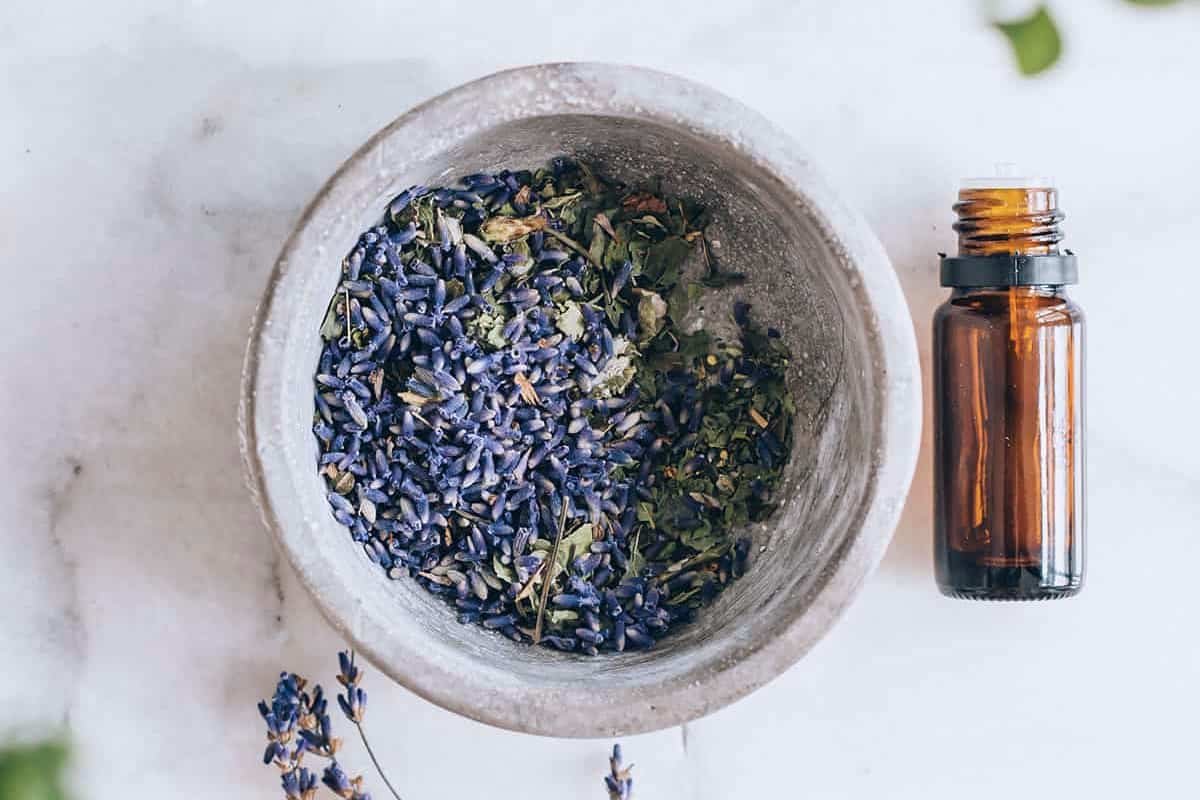
If you need a bruise to heal quicker, the tannins in witch hazel can help reduce the pain and swelling as well as speed healing. Soak a cotton pad in witch hazel, and add a few drops of lavender essential oil. Then apply it directly to the bruise to constrict blood vessels, reduce inflammation, and promote healing.
10. Refresh Parched Skin
Make a face mist with witch hazel and aloe to tone and refresh skin whenever it feels hot, oily, or dirty. Combine in a spray bottle and add a few drops of essential oil (this guide can help you find the right essential oil).
Close your eyes and spritz during the day for hydration (that won't clog oily skin) and pore tightening, thanks to the witch hazel. You can also combine witch hazel with alcohol to make an effective natural deodorant.
11. Sanitize Hands

Combine witch hazel and aloe vera with naturally antibacterial essential oils like lavender, tea tree, and frankincense for a DIY hand sanitizer that kills germs without the sting (or the stink!). Witch hazel takes the place of rubbing alcohol and acts as a second line of defense against germs.
12. Remove Makeup + Clean Makeup Brushes

Try this easy recipe with witch hazel, oil, and water for a gentle, all-natural makeup remover. Witch hazel also helps you clean your makeup brushes. After using a homemade brush cleaner, give brushes a witch hazel spritz to kill any remaining bacteria.
13. Ease Eczema

Witch hazel is wonderful at treating the dryness and inflammation often associated with eczema and other forms of dermatitis [source]. You can apply witch hazel using a cotton swab to the affected area twice daily for relief from pain, itching, redness, and scarring. Use witch hazel only for a few weeks at a time before giving your body a break.
References
Reuter J, et al. Which plant for which skin disease? Part 2: Dermatophytes, chronic venous insufficiency, photoprotection, actinic keratoses, vitiligo, hair loss, cosmetic indications. J Dtsch Dermatol Ges. 2010.
Trüeb RM. North American Virginian witch hazel (Hamamelis virginiana): based scalp care and protection for sensitive scalp, red scalp, and scalp burn-out. Int J Trichology. 2014.
Touriño S, et al. Highly galloylated tannin fractions from witch hazel (Hamamelis virginiana) bark: electron transfer capacity, in vitro antioxidant activity, and effects on skin-related cells. Chem Res Toxicol. 2008.
Thring TSA, et al. Antioxidant and potential anti-inflammatory activity of extracts and formulations of white tea, rose, and witch hazel on primary human dermal fibroblast cells. J Inflamm (Lond). 2011.
Khan BA, et al. New perspectives on the efficacy of gallic acid in cosmetics & nanocosmeceuticals. Curr Pharm Des. 2018.
Cheesman MJ, et al. An assessment of the growth inhibition profiles of Hamamelis virginiana L. extracts against Streptococcus and Staphylococcus spp. J Tradit Complement Med. 2021.
Colantonio S, et al. Botanicals with dermatologic properties derived from First Nations healing: Part 2 - plants and algae. J Cutan Med Surg. 2017.
This article was medically reviewed by Dr. Gina Jansheski, a licensed, board-certified physician with more than 20 years of practice experience. Learn more about Hello Glow's medical reviewers here. As always, this is not personal medical advice, and we recommend that you talk with your doctor.
92



